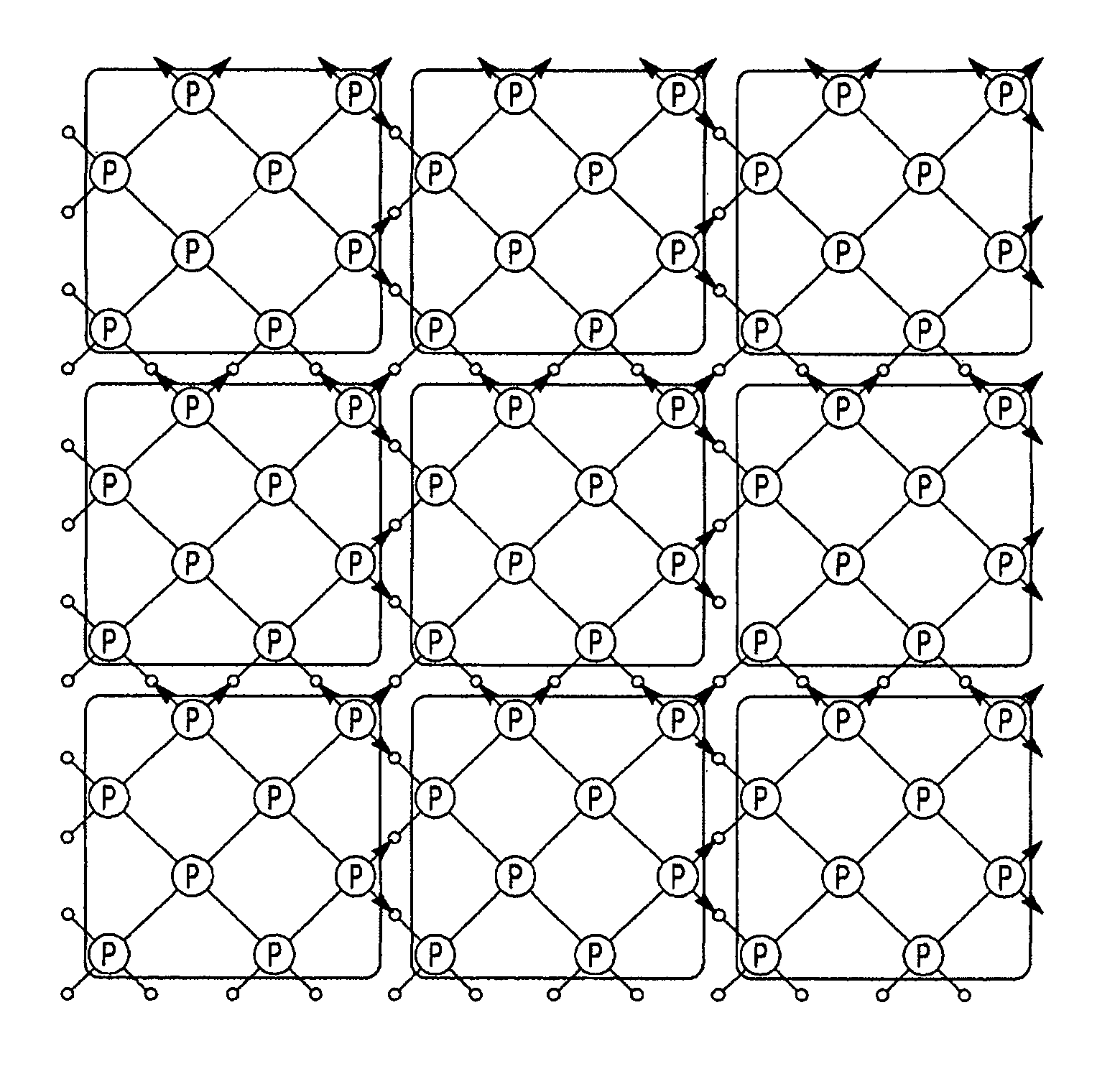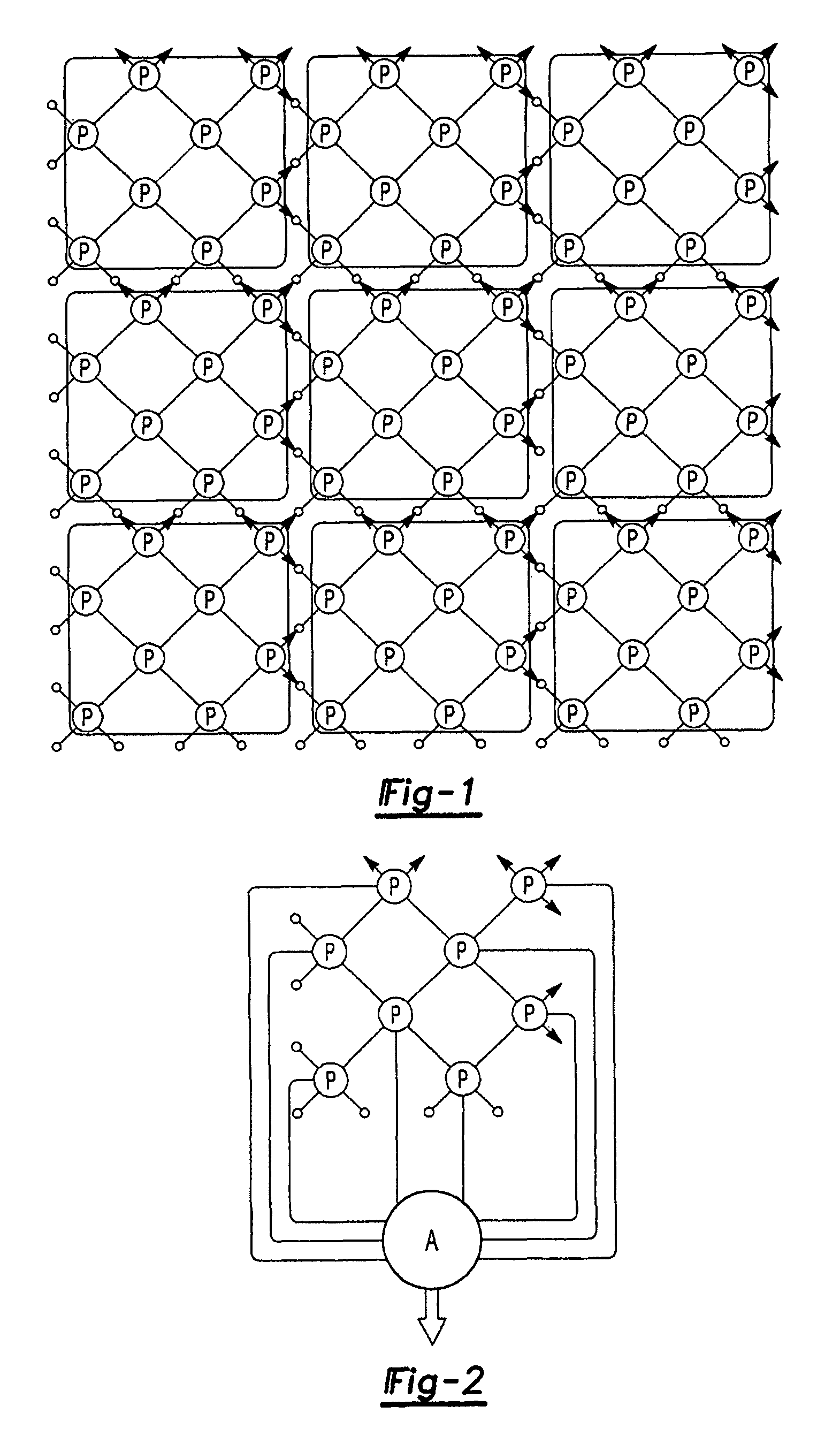Ultra-scalable supercomputer based on MPU architecture
a supercomputer and ultra-scalable technology, applied in the field of supercomputers and multi-processor architectures, can solve the problems of lag in computation power, intermittent errors on a single link may have a serious impact on the performance of massively parallel applications, slowing down communication, etc., and achieves the advantages of footprint advantage, high performance and sustained computing resources, and cos
- Summary
- Abstract
- Description
- Claims
- Application Information
AI Technical Summary
Benefits of technology
Problems solved by technology
Method used
Image
Examples
Embodiment Construction
[0026]The interconnection network topology for the ultra-scalable supercomputer of the present inversion is based on the multi-dimensional MPU architecture connecting a plurality of processing nodes and Axon nodes by multiple independent interconnection networks. Herein, MPU, Master Processing Unit, is termed as a basic processing cell comprising a subset of processing nodes with their upstream Axon nodes and wherein the subset of processing nodes logically connected as an embedding of two virtual multi-dimensional cubes of equal size. The detailed interconnect topology definitions are described in China patent application No. 200610029753.0, titled for “A Parallel Processing System with Self-Consistent Expandable Internal and External Networks”.
[0027]An exemplary embodiment of 2-D MPU architecture, the simplest MPU topology, is shown in FIG. 1 and wherein, every eight processing nodes compose a processing cell, logically connected as an embedding of two squares of four processing n...
PUM
 Login to View More
Login to View More Abstract
Description
Claims
Application Information
 Login to View More
Login to View More - R&D
- Intellectual Property
- Life Sciences
- Materials
- Tech Scout
- Unparalleled Data Quality
- Higher Quality Content
- 60% Fewer Hallucinations
Browse by: Latest US Patents, China's latest patents, Technical Efficacy Thesaurus, Application Domain, Technology Topic, Popular Technical Reports.
© 2025 PatSnap. All rights reserved.Legal|Privacy policy|Modern Slavery Act Transparency Statement|Sitemap|About US| Contact US: help@patsnap.com



